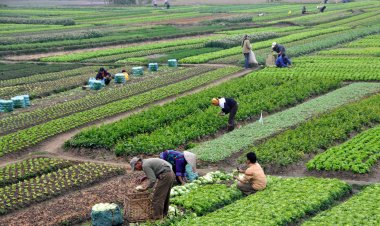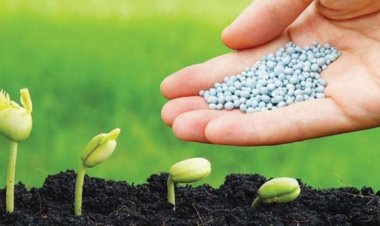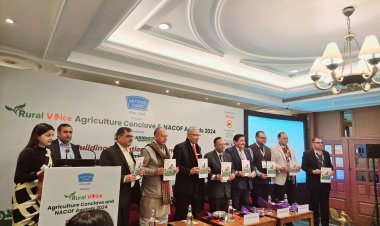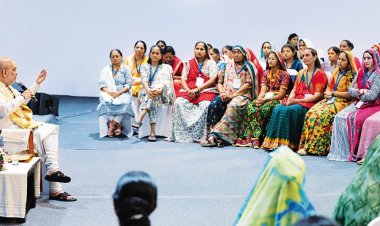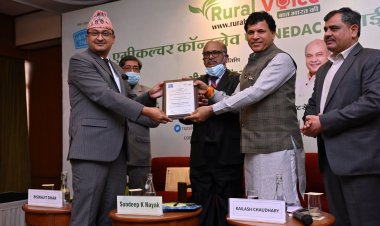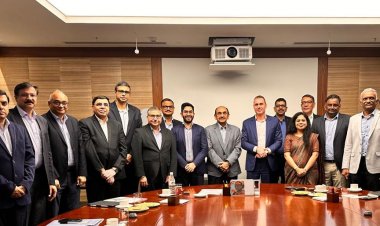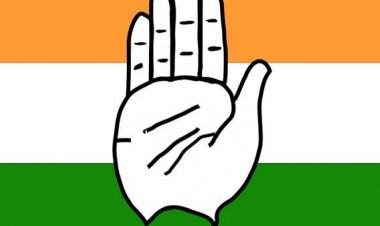Need for change in subsidy policy to rein in skewed fertilizer consumption
Efforts have been made for about the last three decades to balance fertilizer consumption, but there has been a growing imbalance. A major purpose of the NBS in 2009-10 was to promote the balanced consumption of fertilizers, but statistics tell us that the balance is deteriorating and the subsidy rates under the NBS are the reason why this is happening. Estimates suggest that the imbalance will be substantially high in the current year. As per the fertilizer consumption figures, while the use of urea is expected to reach a record high, the consumption of DAP may also attain record levels.
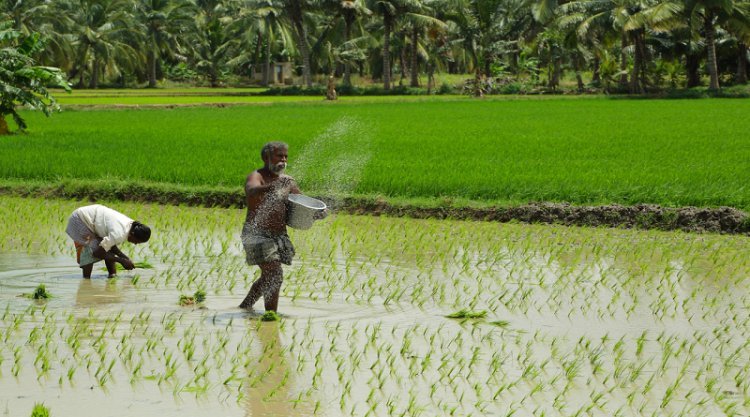
Efforts have been made for about the last three decades to balance fertilizer consumption, but there has been a growing imbalance. A major purpose of the Nutrient-Based Subsidy (NBS) in 2009-10 was to promote the balanced consumption of fertilizers, but statistics tell us that the balance is deteriorating and the subsidy rates under the NBS are the reason why this is happening.
Estimates suggest that the imbalance will be substantially high in the current year. As per the fertilizer consumption figures, while the use of urea is expected to reach a record high, the consumption of Di-Ammonium Phosphate (DAP) may also attain record levels. On the other hand, the consumption of other complex fertilizers will remain low. Again, among these, the consumption of Muriate of Potash (MOP) is likely to witness the steepest decline.
Fertilizer prices have been on a roller-coaster ride for the last year or so. They had reached record highs last year as war broke out between Russia and Ukraine. The prices witnessed a hike across the board, but urea and DAP prices saw a steeper rise. In June-July 2022, the price of urea had reached $900-1,000 per tonne and that of DAP $950-960 per tonne. But the situation has changed rapidly now. And while the price of urea has come down to $550 per tonne, that of DAP hovers around $700 per tonne.
The price of phosphoric acid, the raw material used for DAP, has reduced to $1,175 per tonne from $1,715 per tonne earlier while that of ammonia has gone down from $1,575 per tonne to $900-975 per tonne. While the price of sulphur has declined from $500-525 per tonne during April-June to $180 per tonne, that of rock phosphate has reduced from $300-310 per tonne in October-November to $275 per tonne now.
But the price of MOP has not declined. As against the November 2021 levels of $280 per tonne, it still remains at $590 per tonne. The major reason behind this is that Russia and its neighbour Belarus together have about 40 per cent share in MOP exports. Fertilizer exports from these countries have not returned to normal yet.
This implies that barring MOP, the surge in fertilizer prices has receded. A reduction in prices will benefit the government in terms of huge savings on subsidies and it may reduce the provision for the fertilizer subsidy in the Budget for the next financial year. The prices of food products have also registered a decline in the global market and the food index of the Food and Agriculture Organization (FAO) of the United Nations corroborates this. The index had reached 159.7 in March 2022 but has come down to 132.4 in December 2022.
A reduction in fertilizer prices has resulted in a favourable situation this Rabi season. Unlike last year, no sort of fertilizer crisis has been witnessed in the country this year. However, the situation has not improved yet in the case of MOP.
Another benefit, of course, is the reduction in the subsidy burden. The government had provided Rs 1,05,222.32 crore for fertilizer subsidy for the current financial year, but this may go up to Rs 2.30 lakh crore. The reason behind this is the steep rise witnessed in fertilizer prices after February 2022. However, the reduction in prices over the past few months will result in a cut in the subsidy amount, which would otherwise have gone as high as Rs 2.5 lakh crore. The fertilizer subsidy stood at Rs 1,53,658.11 crore last year. Besides, the reduction in fertilizer prices also brings the advantage that the government may keep the budgetary provision for fertilizer subsidy at about Rs 1.5 lakh crore in the Budget to be presented for the new financial year (2023-24) on Feb 1.
The Union Government started NBS in April 2010 with the aim of reducing the consumption of urea, MOP and DAP. While urea contains 46 per cent of nitrogen (N), DAP has 46 per cent of phosphorus (P) and 18 per cent of nitrogen (N). MOP contains 60 per cent of potash (K). Under NBS, the subsidy is given on per kg basis for N, P, K and sulphur (S). Therefore, the aim of NBS was to promote the use of complex fertilizers that contain N, P, K and S in various ratios rather than that of a particular product.
The figures given below bear testimony to the fact that the policy seemed to be proving successful in the initial years when the consumption of other complex fertilizers constantly increased. During this period, the consumption of various NPK variants increased and they were used more in place of urea, DAP and MOP.
Consumption of fertilizer products at all-India level (in lakh tonnes)
|
|
Urea |
DAP |
MOP |
NPK variants |
SSP |
|
2009-10 |
266.73 |
104.92 |
46.34 |
80.25 |
26.51 |
|
2010-11 |
281.13 |
108.70 |
39.32 |
97.64 |
38.25 |
|
2011-12 |
295.65 |
101.91 |
30.29 |
103.95 |
47.46 |
|
2012-13 |
300.02 |
91.54 |
22.11 |
75.27 |
40.30 |
|
2013-14 |
306.00 |
73.57 |
22.80 |
72.64 |
38.79 |
|
2014-15 |
306.10 |
76.26 |
28.53 |
82.78 |
39.89 |
|
2015-16 |
306.35 |
91.07 |
24.67 |
88.21 |
42.53 |
|
2016-17 |
296.14 |
89.64 |
28.63 |
84.14 |
37.57 |
|
2017-18 |
298.94 |
92.94 |
31.58 |
85.96 |
34.39 |
|
2018-19 |
314.18 |
92.11 |
29.57 |
90.28 |
35.79 |
|
2019-20 |
336.95 |
101.00 |
27.87 |
98.57 |
44.03 |
|
2020-21 |
350.43 |
119.11 |
34.25 |
118.11 |
44.89 |
|
2021-22 |
341.80 |
92.72 |
24.56 |
114.79 |
56.81 |
|
Apr-Nov 21 |
217.53 |
70.47 |
19.26 |
85.88 |
42.67 |
|
Apr-Nov 22 |
232.53 |
83.53 |
11.23 |
69.96 |
38.70 |
Source: Fertilizer Association of India
But the situation has changed over past some time. Urea consumption was less than 300 lakh tonnes (lt) till 2017-18 but it crossed 350 lt in 2020-21 and is expected to remain above this mark in the current financial year, too. On the other hand, the consumption of NPK and SSP in 2019-20 was even lesser than that in 2011-12. The consumption rose somewhat in 2020-21 and 2021-22 but this rise was due to the MOP availability crisis. But the trend has changed this year and the excess consumption of DAP and urea has upset the fertilizer balance. The sales level reached by the end of this financial year will give a better picture of this change. It is estimated that while the consumption of urea will be more than 350 lt, that of DAP will reach 120 lt. On the other hand, the consumption of SSP and MOP are expected to witness a steep decline.
The reason behind this is the fertilizer price situation. Often, DAP would sell at prices higher than those for other complex fertilizers. But this is not so this year. While the urea price has been stagnant at Rs 5,628 per tonne since November 2012, that of DAP stands at Rs 27,000 per tonne. On the other hand, the price of 20 : 20 : 0 : 13 complex is Rs 28,000 per tonne while 10 : 26 : 26 : 0 complex and 12 : 32 : 16 : 0 complex are priced at Rs 29,400 per tonne. The price of MOP is Rs 34,000 per tonne.
However, according to government policy, the government has no control over the price of fertilizers decontrolled under NBS and the fertilizer companies can fix their own prices on the basis of the subsidies fixed by the government. But, in order to keep the prices of DAP — the second most popular fertilizer after urea — low, the government has brought about a steep hike in the subsidy over the past year and a half. Under NBS, a subsidy of Rs 98.02 per kg is given on N, Rs 66.93 per kg on P, Rs 23.65 per kg on K and Rs 6.12 per kg on S. What is significant is that while the government increased the subsidy on N for the current Rabi season, it cut the subsidy on other nutrients. This is a step that would promote skewed fertilizer consumption. For the sake of balanced consumption of fertilizers, the government should have given more subsidies on other nutrients as compared to that on nitrogen.



 Join the RuralVoice whatsapp group
Join the RuralVoice whatsapp group


















